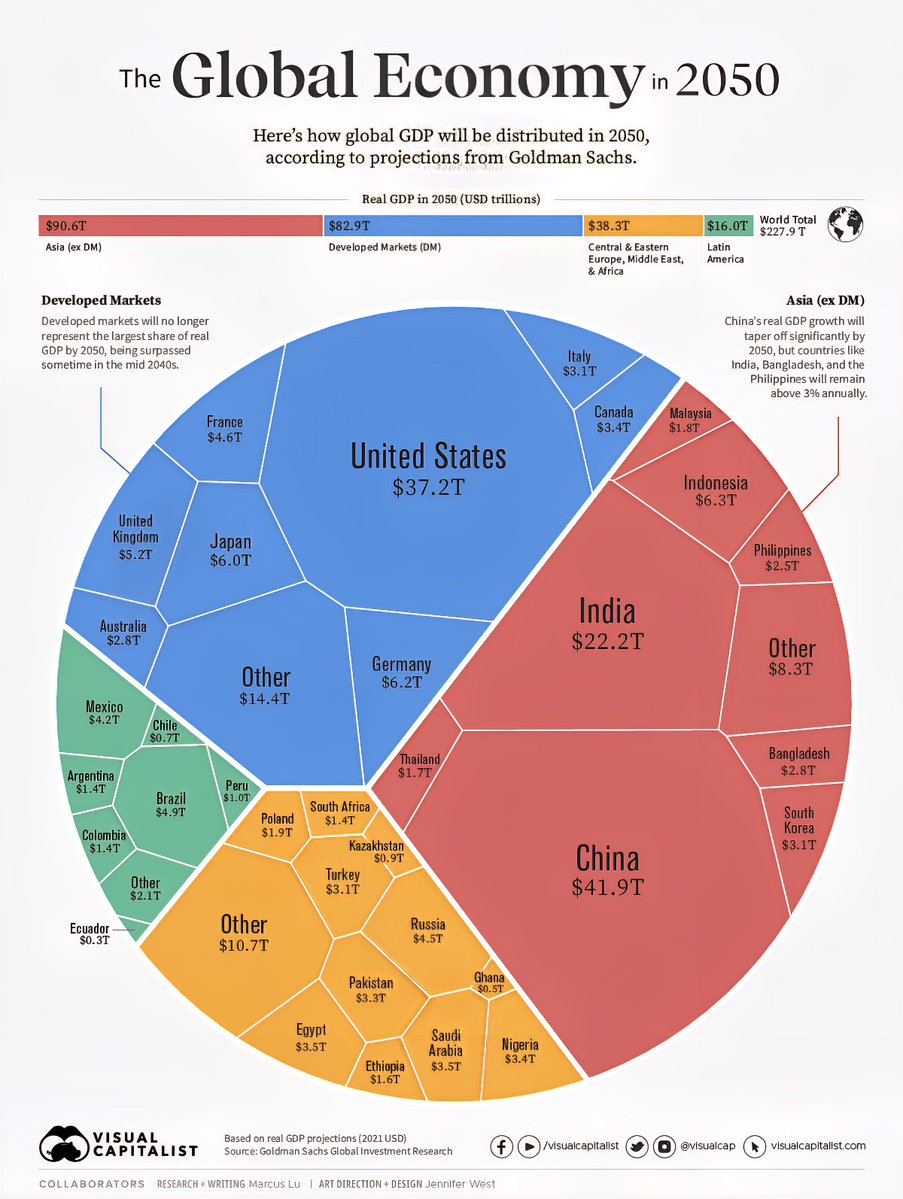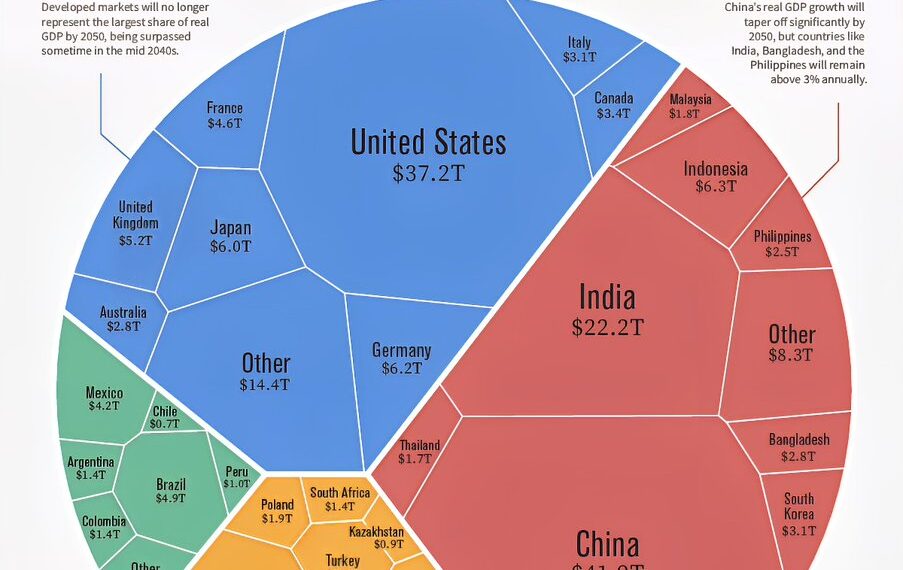Select Language:
The Future of Global Power: Top Economies Expected in 2050

1. China Continues Its Economic Ascent
By 2050, China is projected to solidify its position as the world’s largest economy, surpassing the United States. Driven by sustained industrial growth, technological innovation, and urbanization, China is poised to maintain its rapid development trajectory. Its Belt and Road Initiative and investments in AI and renewable energy sectors are expected to fuel its economic dominance. Domestic consumption and a burgeoning middle class will play integral roles in steering China’s economic future.
2. The United States Remains a Global Powerhouse
Despite being overtaken in overall size, the United States will still rank among the top economies in 2050. Its deep technological infrastructure, innovation capacity, and resilient financial systems will ensure its continued influence. The U.S. focus on green technology and high-value industries will help maintain its competitive edge, while demographic shifts and migration patterns could influence economic dynamics.
3. India: The Asian Economic Tiger
India is set to emerge as a major force in the global economy by 2050. With a population expected to reach nearly 1.7 billion, India’s demographic advantage, coupled with advancements in technology and infrastructure, positions it for exponential growth. Its tech hub transformation and focus on digital services, manufacturing, and renewable energy will propel its rise, potentially making it the third-largest economy in the world.
4. Nigeria: Africa’s Economic Powerhouse
In a significant shift, Nigeria is projected to become Africa’s largest economy by 2050. Rich in natural resources, particularly oil and minerals, Nigeria is diversifying into sectors like telecommunications, agriculture, and services. With a young and growing population embracing technological adoption, Nigeria’s economy could undergo rapid expansion, positioning it as a key player on the global stage.
5. Brazil: Latin America’s Leading Economy
Brazil is expected to maintain its status as Latin America’s top economy through investments in renewable energy, agribusiness, and technology. Political stability and reforms aimed at boosting infrastructure, education, and innovation will be critical. As the world’s largest exporter of commodities like soy and beef, Brazil’s economy is set to grow, linking regional development with global markets.
6. Indonesia: Southeast Asia’s Economic Hub
Indonesia is forecasted to ascend as Southeast Asia’s dominant economy by 2050. Its large population, agricultural base, and expanding manufacturing sector make it a prime candidate for rapid development. Infrastructure projects and digital innovations will likely facilitate Indonesia’s integration into the global supply chain, elevating its economic profile.
7. Mexico: North America’s Rising Star
With strong manufacturing industries and close economic ties to both the U.S. and Canada, Mexico’s economy is predicted to grow substantially by 2050. Growth sectors include automotive, electronics, and renewable energy. Strategic trade agreements and a young workforce will catalyze its rise, making it an essential component of North America’s economic landscape.
8. Russia: Resource-Rich and Resilient
Russia’s role as a major energy exporter will likely persist, but diversification into technology, manufacturing, and agriculture could boost its long-term growth prospects. Its vast landmass and natural resources remain vital, although economic modernization will be vital for its sustained position among top economies.
9. Pakistan: A South Asian Power Player
Fast economic development fueled by a youthful population and strategic investments in technology and infrastructure could propel Pakistan into the league of major economies. Its expanding textile, manufacturing, and services sectors will contribute to its growth potential, positioning Pakistan as a regional economic leader.
10. Japan: Innovator in Technology and Sustainability
Although Japan’s overall size may slightly decline relative to other giants, its focus on cutting-edge technology, robotics, and sustainable energy will keep it relevant. Japan’s expertise in automation, medicine, and green technology will continue to influence global markets, maintaining its status as a key economic player.
The landscape of global economies is expected to undergo significant change by 2050, driven by demographic shifts, technological breakthroughs, and strategic policy pivots. Countries like China, India, and Africa’s Nigeria are set to take center stage, reshaping the global economic order and presenting new opportunities and challenges for the world.







